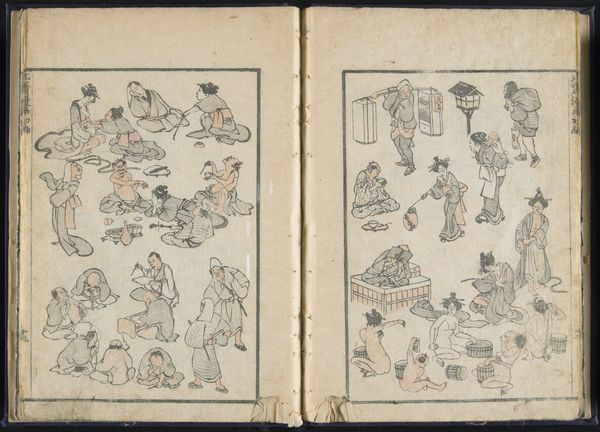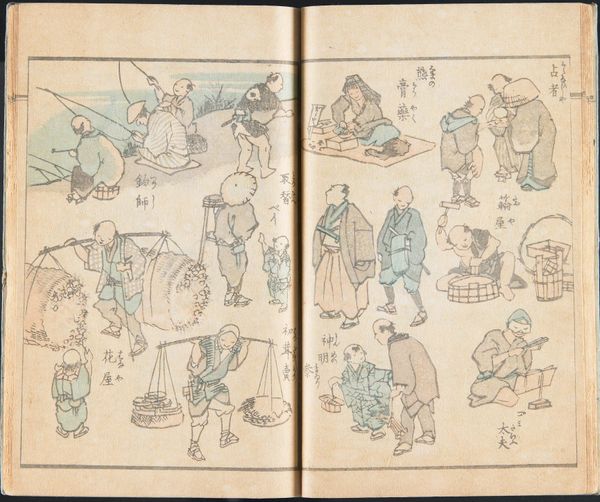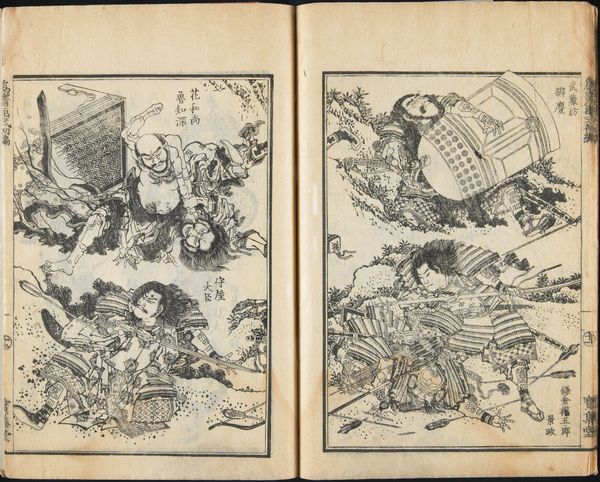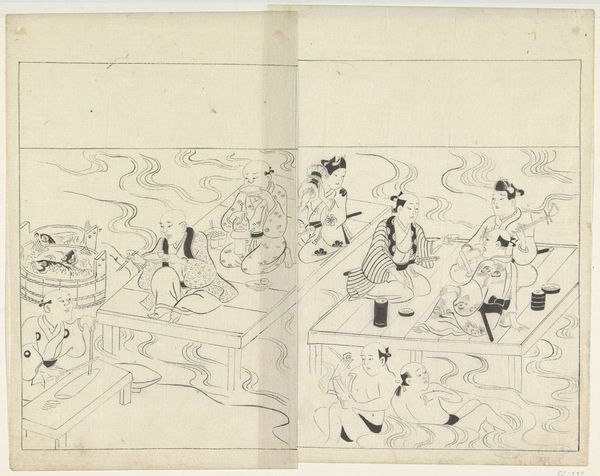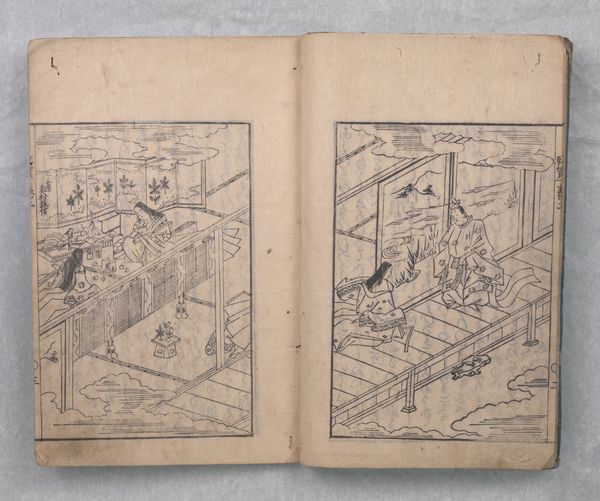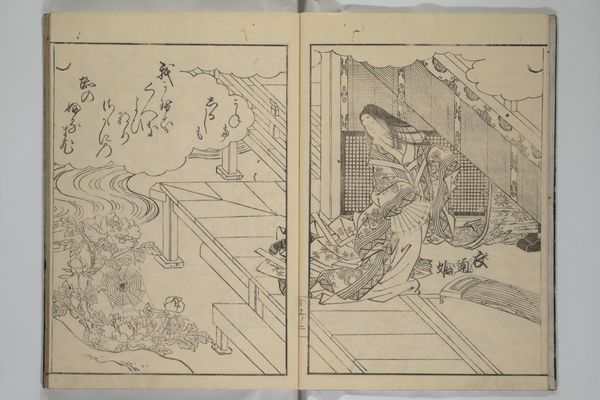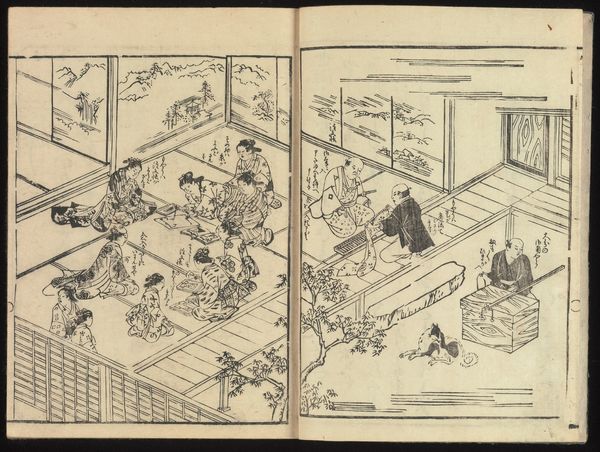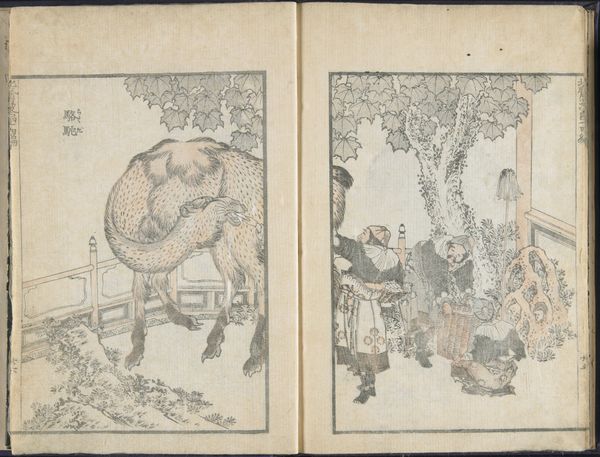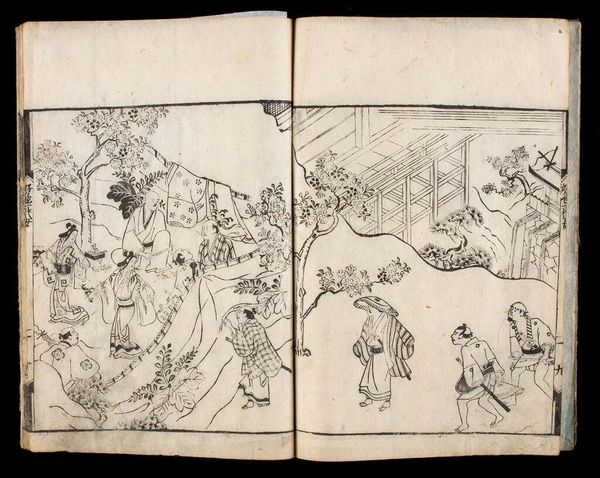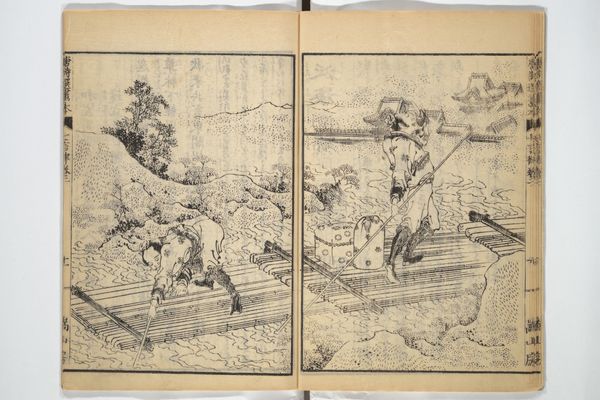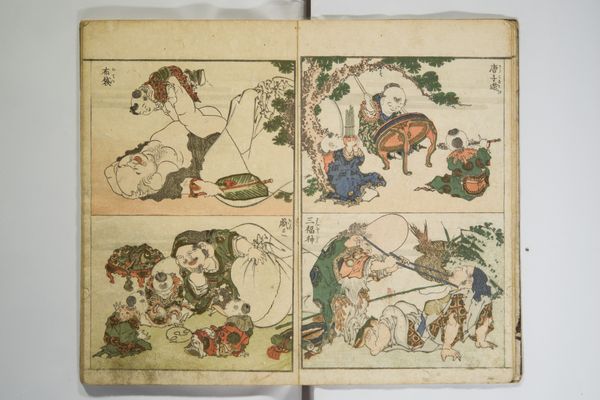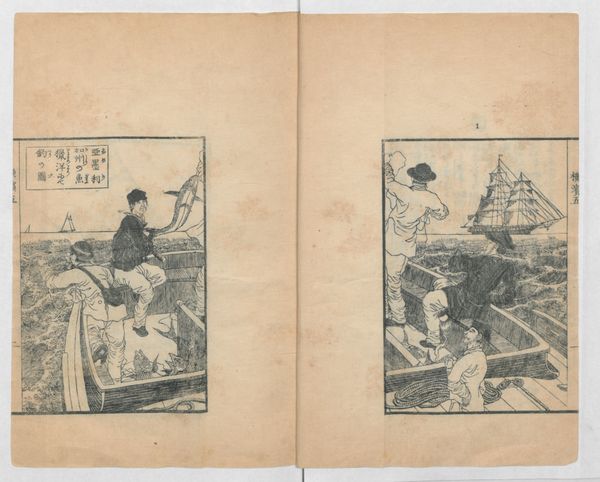
Transmitting the Spirit and Revealing the Form of Things- Hokusai's Sketchbooks 1814
0:00
0:00
drawing, graphic-art, print, paper, ink, color-on-paper
#
drawing
#
graphic-art
#
narrative-art
#
pen drawing
#
mechanical pen drawing
# print
#
pen sketch
#
book
#
asian-art
#
sketch book
#
ukiyo-e
#
japan
#
figuration
#
paper
#
personal sketchbook
#
ink
#
color-on-paper
#
pen-ink sketch
#
line
#
pen work
#
sketchbook drawing
#
genre-painting
#
storyboard and sketchbook work
#
sketchbook art
Dimensions: 9 x 6 1/4 x 5/16 in. (22.9 x 15.8 x 0.8 cm) (outer frame)
Copyright: Public Domain
Editor: So this is "Transmitting the Spirit and Revealing the Form of Things – Hokusai’s Sketchbooks," dating back to 1814. It’s a two-page spread filled with lively ink drawings. There's such an energetic, almost chaotic feel to it, with all these figures engaged in different activities. What strikes you most about this work? Curator: The chaos you mention is actually incredibly ordered, isn’t it? Consider the period, 1814, and the context of Japan at the time, still largely a feudal society. Hokusai presents us with scenes of everyday labor. The figures aren't romanticized heroes; they're common folk involved in the mundane activities that sustained society. What statement do you think Hokusai might be making by placing so much emphasis on labor? Editor: I hadn't considered the social commentary aspect. Perhaps it’s a way of humanizing the working class, giving visibility to those whose efforts are often overlooked? Curator: Precisely. And that raises important questions. Who has the power to represent whom, and for what purposes? Think about the role of Ukiyo-e prints like these. They weren't simply pretty pictures; they were a form of mass media. How might this accessibility have impacted social perceptions? Editor: That makes me think about contemporary issues of representation, about who gets to tell whose story, and how visual media shapes our understanding of labor and class. Curator: Absolutely. And that connection, that thread between historical context and contemporary issues, is where the true power of art lies. It challenges us to reflect on not just what we see, but also why and how we see it. Editor: I am beginning to understand it in a more deeper sense than when I started looking at it. It goes beyond mere aesthetic appreciation; it’s about understanding social dynamics. Curator: And questioning the narratives embedded within them. This is how Hokusai's sketchbook from 1814 speaks to us today.
Comments
No comments
Be the first to comment and join the conversation on the ultimate creative platform.
